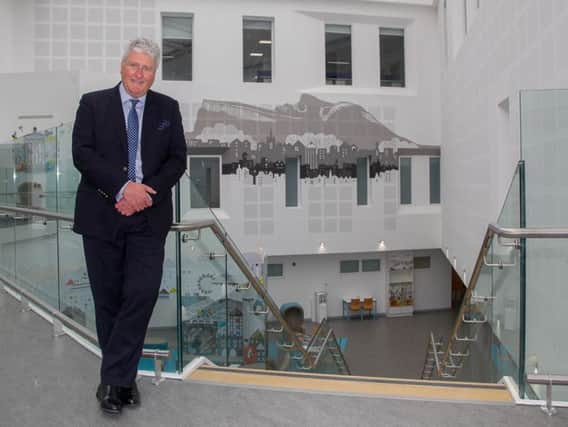NHS Lothian chief considered quitting over Edinburgh's new Sick Kids hospital debacle


But the man ultimately in charge of the £150 million new hospital said he felt he had acted appropriately throughout and intended to focus on "getting this fixed".
The opening of the new building at Little France was called off at the last minute in July on the orders of Health Secretary Jeane Freeman after it was discovered the ventilation in critical care did not meet national standards. It is now not due to open until next autumn and a public inquiry will look into what went wrong.
Advertisement
Hide AdAdvertisement
Hide Ad"I have concluded that what I need to focus on is to get this building open and make sure our patients and staff see the benefit of that.
"I believe since I was made aware of this problem I have acted entirely appropriately and professionally. I made no attempt to conceal the problem or proceed in spite of it. I immediately blew the whistle and escalated it to government to say 'I think we have a major problem'.
"I think I have behaved appropriately and my focus is to get this fixed."
In an interview with the Evening News, Mr Davison also admitted with hindsight he would not have accepted the handover of the new building in February with 70 items still being sorted by the construction consortium IHSL.
Advertisement
Hide AdAdvertisement
Hide AdHe said NHS Lothian had agreed to commission the building at the same time as remedial works were being carried out because they were keen to get into the building during the summer.
"In hindsight we could have given ourselves more time - but even if we had taken an extra three months, as it turns out that would not have been sufficient for the remedial work we now know needs to be done."
But Mr Davison said the document, called the Enivronmental Matrix, had been drawn up years earlier before it was decided to involved a private sector consortium and only provided to them as a help. He said contract signed with IHSL required them to design a building which complied with the national standards laid down in government guidance and it was their responsibility to check what these standards were.
He said: "Even if it is accepted there was room for interpretation or confusion, that should have been escalated - and it should have been escalated by any one of a number of stakeholders who had a responsibility in this regard. That would have included IHSL and Multiplex, if they had said 'Hang on, your Board's Construction Requirements says one thing and this Environmental Matrix says another, can we be clear?' It would also have included our own external advisers - we had legal and financial advisers - and then of course we had our own project team.
Advertisement
Hide AdAdvertisement
Hide Ad"What remains unexplained is how so many senior technical people from a range of backgrounds collectively and individually could not have flagged that there was at least a contradiction here."
He said: "The Sciennes building is safe - because it isn't just the building that contributes to safety. It's part of it, but staffing is part of it, training and development, protocols, procedures, monitoring, equipment."
He said there was new equipment going into the existing building and an ongoing programme of refurbishment to make it as comfortable as possible for patients and staff.
And he said moving ti the new building knowing it did not meet certain standards would not be right.
Advertisement
Hide AdAdvertisement
Hide Ad"The view was let's get this building right because hopefully we're going to be here for another 50 years."
How the decision to delay was made
On July 2 - three days before the move to the new building was due to begin - Tim Davison told Scottish Government officials there was a problem.
Independent consultants had found the ventilation in critical care was not up to the required standard and could not be fixed in time.
Mr Davison convened a meeting of senior staff and expert advisers and agreed they had a 48-hour window decide: “Are we stopping or are we going?”
Advertisement
Hide AdAdvertisement
Hide AdHe said: “From the outset government officials made it clear the Health Secretary [Jeane Freeman] wanted to make the final decision.
“Our role was to pull together the best possible view about what would be reasonable and sensible.”
They looked at four options. One was to move in and fix the problem once they were there, but it was felt that risked too much disruption.
Another was to move in and when it came to fixing the problem, critical care would be decanted to a modular unit in the car park, but that was rejected as unsuitable for the sickest children in the hospital.
Advertisement
Hide AdAdvertisement
Hide AdA third - the one chosen in the end - was to cancel the whole move until the issue was sorted.
A fourth was to delay but move some services like outpatients in a few months.
Mr Davison said: “Our view was that was probably the route we should go down. With her own advice the Heath Secretary’s view was we should just pause altogether.
“I think that’s entirely appropriate - and I think events have proved that.”
